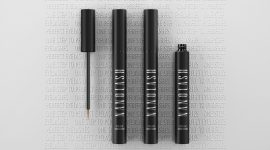Shikimic acid – what’s hidden under this odd name?
Cosmetic market has developed so much that no ingredient in creams, balms and masks can no longer surprise us. And yet, there is still something new to come up with! Let us introduce gaining popularity ingredient – shikimic acid. What is it? How to use it? Where to find it?
Until recently, no one has even thought that you can use shikimic acid in cosmetics. This is acid in AHA group (alpha hydroxy acids). Till now it was used as a semi-finished product for drugs, mostly the antiviral, to activate the synthesis of vitamin K, anti-inflammatories, and even in pain killers.
Natural source for shikimic acid is star anise. This is the plant that shikimic acid get its name from, because in Japanese it is called Shikimi. Its use is truly wide. Tests indicated that 5% concentration of this acid works similarly to the 50% concentration of glycolic acid. Therefore, it is great replacement.
Shikimic acid properties:
- has strong antibacterial and anti-acne action;
- perfectly moisturises and makes epidermis elastic and firm;
- regenerates skin suffering from depigmentation, discolouration and photodamages;
- regulates sebum secretion and unclogs sebaceous glands;
- limits stratum corneum, smoothers and makes skin radiant.
Just by looking at all the enumerated above properties of the shikimic acid, it is no brainer as to why cosmetic manufacturers reach for it so willingly. It is simply complex solution for skin problems of all sorts. If there is anything lacking in your skincare, you want to even skin complexion or improve regeneration, then shikimic acid will certainly help you.
It is advised against use of this substance directly, because its action may depend on personal susceptibility. It is much safer to invest in cosmetic with its addition. Shikimic acid can be found in skincare products for acne, oily, dry or damaged skin. Enriched with it are usually creams, tonic, gel, emulsion or serum.




Leave a Reply